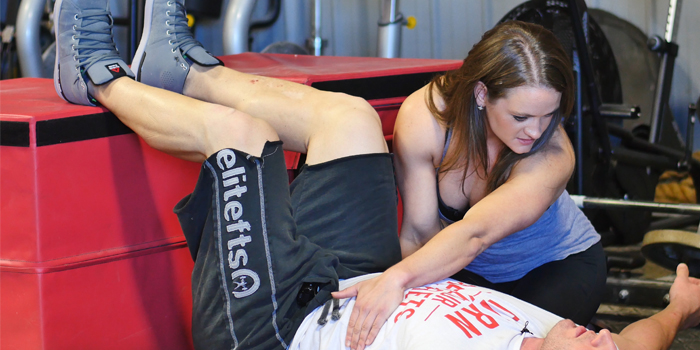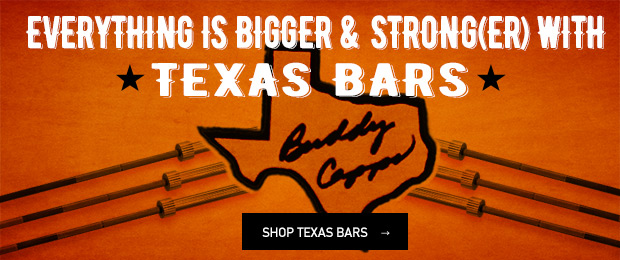
Unpopular opinion: Heavy Barbell Romanian Deadlifts aren’t the only hinge variation to crush your soul, and in fact, might not be the best movement for many people.
As much as I’ve come to appreciate the role of social media in broadening our lifting toolboxes, the more I’m around other coaches, the more I wonder if we’ve truly lost the art of exercise application and modification. It’s absurd how it seems like every month, there’s a new trendy exercise, often a heavy variation of a fundamental pattern, that’s being performed well by a handful and butchered by the masses.
RECENT: Understanding Groin Injuries: Complex Groin Injuries
There’s an assumption (known or unknown) that everyone has the proficiency to perform what we see “if we just lower the weight.” That’s quite the caveat with a lot of assumption. We see someone do a heavy set of Romanian Deadlifts or large deficit Romanian Deadlifts without seeing the years that it took to get to a point where the body needed that drastic a stimulus to elicit change.
I’m the first to be drawn to heavy exercises, but when we see someone with entirely different training history and goals doing a movement on Instagram, and we start inappropriately implementing the movement into our training, or worse, our clients’ training, that’s a problem. As coaches, we can be smarter to do better to serve our clients and build their capacity. Proficiency will always be the largest player in developing capacity and ability.
Heavy Romanian Deadlifts are also a relatively high skill task. The definition of a skill is a learned ability with expected, pre-determined results. Heavy barbell Romanian Deadlifts implicate a large positional demand, high stabilization and coordination demands, and relatively high risk/reward ratio if not properly executed. The ability and task need to be matched with the intended results.
If we’re being honest about what’s trendy, with all the bracing and rooting work that’s been rightly popularized, most people have an exceptionally difficult time creating rigidity that requires a mild amount of flexion below the ribcage anteriorly and extension above and below.
When people can’t find and control those two variables (which is stupidly hard to do, if you’re doing it well) and increase the range or weight on their heavy hinges, there has to be either a subtle loss of position or excessive effort elsewhere.
I watched a friend of mine who is an exceptionally advanced lifter do heavy deficit Romanian Deadlifts, and before the bar was halfway down his shins, instead of hinging, he lacked rigidity (defined above) and really just let his pelvis tip forward.
Did he feel a stretch in his hamstrings? Of course he did, but it came from pelvis movement rather than a strict hinge. We have soft tissue structures there (ligaments) that are designed for stability. He spent the next four weeks complaining about sacroiliac/low back pain because he was unable to make the distinction between a true hinge with trunk rigidity versus simultaneous hip/trunk flexion and assumed the latter meant the former was in place.
We worked on maintaining rigidity, and he took two plates off the bar in order to maintain position. His hamstrings were wrecked, which was his intent to begin with. That meant his skill proficiency increased and the task matched intended results. I saw this advanced lifter in-person; he has a long training history and is movement-smart and kinesthetically aware.
Most of us working with novice to intermediate remote clients know that video of how someone is doing an exercise makes a world of difference. We over-prescribe and under-communicate rather than develop skill and bolster capacity.
RELATED: 12-Week Conjugate Deadlift Cycle for a Raw Lifter
There’s no doubt that heavy Romanian Deadlifts for strength, size, and coordination have their places at the right time in an athlete’s year, but that skill needs to be razor-sharp before loading with intensity. A growing body of research is showing the role of the Romanian Deadlift in strength and size, yes, but also in the development of motor control and spinal stabilization.
A huge number of personal training clients, therapy patients, and powerlifters will benefit from the stability and patterning from other variations and should still be able to elicit some sort of stimulus for the desired effect, rather it be hypertrophy, coordination, or athleticism.
If we’re chasing progress, longevity is the linchpin: Training hard for 10 years will yield better results than flooring it for three, period. Consider these variations, depending on what the actual purpose of your training and the movement is as you’re reading this.
B-Stance Romanian Deadlift
When people think about single-leg Romanian Deadlift variations, there’s an instant deflation factor. I don’t know why or how it happened, but single-leg variations have sort of been thrown in this mobility/rehab box of things you randomly add at the beginning or end of your workout as fluff work. Thinking this way means missing out on some serious movement variation.
The B-Stance Romanian Deadlift is an incredible way to increase the amount of load you can use because it eliminates the balance demand of a traditional single-leg deadlift, while still maintaining relatively single leg work if properly performed. By keeping your back foot lightly on the ground, you’re increasing the stability, which lets your body handle more load. You can do these with kettlebells, heavy dumbbells, or unilaterally loaded to increase lateral chain stability. Alternatively, you can utilize a tempo variable.
If people make mistakes or get sloppy with these, it usually manifests in too much weight on the back leg/over bracing with the back leg’s hip flexor or not sitting back evenly and allowing the pelvis and lateral chain to disengage. .Be sure to maintain a relatively “neutral spine” (which is really nothing more than an acceptable range) with enough lumbar extension, as well as anterior core engagement to ensure hip hinging rather than spine-tipping.
This movement is great for the advanced lifter who needs some rooting cues (as my friend did above) and still wants some hard work or for those not quite ready for a single-leg deadlift variation. Don’t be shy about going a little heavier with these: Think of them as the anti-fluff single-leg deadlift variation.
Landmine Romanian Deadlift
Everyone loves to talk stability being the mother of strength, which is true, and about anti-rotation exercises from the perspective of trunk/core strength. What I love about the Landmine Romanian Deadlift is the somewhat-fixed position of the barbell. It’s a little easier (or difficult, depending on your strengths/weaknesses) to groove rather than a traditional free kettlebell or dumbbell Romanian Deadlift, but by virtue of the degrees of freedom allowed at the hip from its ball and socket nature, true rotational control happens at more than just the trunk, but must also happen at the hip/glutes.
The landmine allows the hips to concentrically and (à la anti-rotation) in a semi-controlled environment. One major cue to consider with your athletes is maintaining level hips, which may actually require thinking about rotating the hip on the working leg forward, engaging glute max in the transverse plane IN stance. This control of pelvic rotation is huge for gait, which powerlifters suck at and most other athletes need proficiency in.
The semi-fixed nature of the barbell in the landmine also tends to let VMO/quads engage appropriately if the hip is fixed in an appropriate position. Using the cue of really feeling/sensing the stance foot into the ground (big toe/outer toe/heel) can help with this and make a tremendous difference for individuals with knee pain or torsion.
Dumbbell Romanian Deadlift — Pulsed
I saw Julia Anto doing these a while back, so figured I’d try them, and my hamstrings were wrecked. I was rehabbing a hip injury at the time and found that going above a certain weight threshold with deadlifts and Romanian Deadlifts meant my positions went to crap REALLY quickly. I wanted to build endurance in better positions while bolstering tissue capacity, and quite frankly, I wanted to get a posterior chain pump.
Julia performed them with a full reach all the way down, came up about halfway, then went back down, and then completed the rep by returning to the top. Intentionally controlling tension on both the concentric and eccentric with a cue to lever oneself up is an amazing way to proprioceptively start to recognize great hinging position.
The time under tension here is brutal and adding tempo control means improving your ability to sense and feel what’s working, which can be hugely instrumental in both hypertrophy and control (thereby letting you handle heavier weight in the future and grow more).
One of the major ways people will cheat here is by accessing excessive pelvic rotation — if you’re going to do these, be strict with them. They have such a huge positional benefit that can be missed if you aren’t careful and being strict with the position will also likely make it easier to maintain the effort through the hamstrings, glutes, and anterior core.
Single-Leg Romanian Deadlift
I hate adding this one in for the same reason I mentioned earlier; that this tends to be a movement that’s sort of arbitrarily thrown into the beginning and end of a workout because we should without really thinking about how it’s assisting in development or what its purpose is.
The beauty of the single-leg deadlift comes in with two primary contributors, being both tri-planar control and utilizing hip for both rotational and lateral stability, and in how many ways you can modify the exercise to improve control in so many other potential areas. Mastering the single-leg deadlift means you can combine it with row variations or a kettlebell march to single-leg deadlift combo.
If anti-rotation and lateral stability work to you mean Pallof Presses, think again and start incorporating control from the hips. Hip airplanes are a great example of what it looks like to use the hip for rotational control. Adding a variable like a single-arm row places greater demand on generating tension on more than just the obliques for stability in both the frontal, as well as transverse, plane. Exercises like this are a great way to offset some of the weird postural tendencies we acquire throughout the day.
None of these variations will ever replace the real-deal heavy barbell Romanian Deadlift, but they certainly have applications for improving movement quality, tissue capacity, and kinesthetic awareness. Those three ideas are pillars for stability, strength, and longevity.










